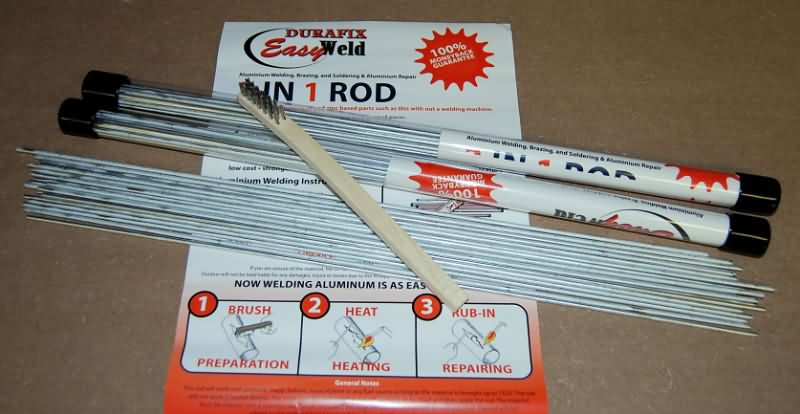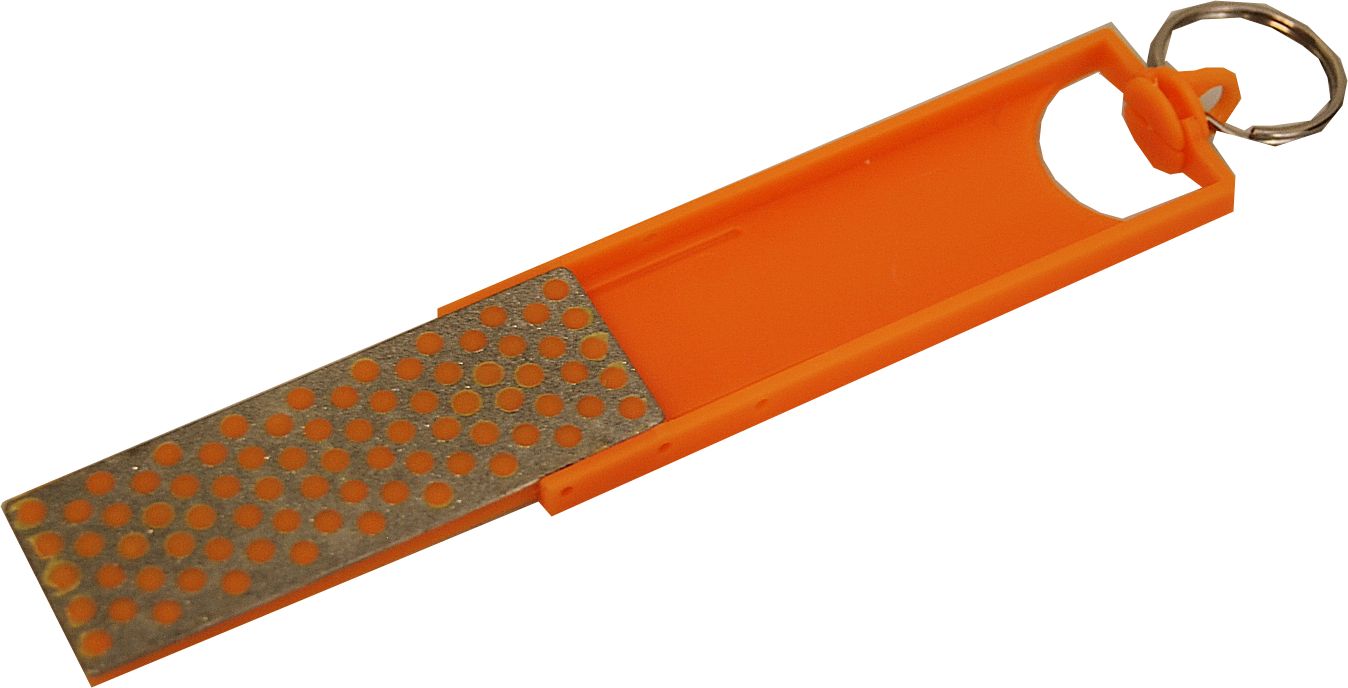Chronos are pleased to announce we now stock the superb DURAFIX ALUMINIUM WELDING BRAZING & SOLDERING RANGE.
POCKET DIAMOND SHARPENER WITH EVERY DURAFIX ORDER IN JULY
WHILE STOCKS LAST
xxx sorry all hones now gone xxxx
CLICK HERE TO ORDER

This revolutionary product designed specifically for aluminium welding, uses no flux, making it easy to use and environmentally safe. A low working temperature of 732° F (392° C).
Durafix is the easiest method of welding aluminium and is ideal for use on all types of repairs. Large or small the rod can help you make a professional, inexpensive and durable weld.
“Durafix Easyweld carries a 100% guarantee. If you are not entirely satisfied, please return the product in its original packaging and we will refund your money. No questions asked!”
Welds made with the rod are clean and free from slag, and produces a sound joint which is stronger than the parent metal. With Durafix rods you can now do aluminium welding which were previously too difficult or uneconomic.
Aluminium boat repair was often impractical because of the very thin guage aluminium used in boat hulls. Now aluminium skins of almost any thickness can be welded successfully, easily and cheaply.
Durafix can be applied with any handheld torch – Oxyacetylene, Mapp, Propane or Butane. The Durafix rod is an essential product for the D.I.Y enthusiast and a valued addition to the professional workshop for aluminium welding.
The Advantages of Durafix!
- There is no need for expensive equipment.
- No need for years of welding experience.
- It’s convenient and can be used by both novice and professional alike.
- Welds are clean and free from slag, and stronger than the parent metal.
- You can now repair aluminium, previously too difficult or uneconomic.
- Durafix can be applied with any handheld torch – Oxyacetylene, Mapp, Map/Pro or Propane.
- Durafix works on most aluminium, zinc, copper, brass, pot-metal and die-cast aluminium.
The Dis-advantages of Durafix!
- Durafix will not work on any ferrous metals – except galvanized steel.
- Durafix will not work on Stainless steel, 2000 grade or Renthal T6 aluminium.
- Durafix will not work on lead, mazac, zamac, tin or pewter.
CLICK HERE TO ORDER
|
| Preparation
Brush surface of the part to be repaired thoroughly under heat to break up the surface coating of aluminium oxide.
|
 |
| Heating
Heat the aluminium parts hot enough for the rod to flow without the aid of the flame, thoroughly tinning the surface.To test for the correct temperature, rub the end of a rod onto the work surface while heating, the rod will flow when working temperature is reached.
|
 |
|
Tinning
Brush tinned surface under heat, thoroughly filling the open pores. This creates a film of rod over the weld or repair area, which aids bonding and strength to the weld.
|
 |
|
Filling
With sides thoroughly tinned, flow in enough rod to fill the vee. Be sure filler fuses with the tinned surface without melting the aluminium.
|
 |
Apply the heat and rub the end of a rod onto the damaged area, almost immediately the rod will flow. Simply go over the damaged area and take the heat away. It will be cool in a few minutes, with your hole effectively fixed. When its cool fill with water and test again.Because the rods don’t drip like conventional solder, going over the holes won’t cause blokages in the pipes, so the radiator will be as good as new, and for the cost of a few cents and a few minutes of your time, you have a perfectly working radiator.The same is applicable for fixing cooling units, condensors, and air-conditioning units.Durafix Easyweld rods work on any non-ferrous metals, except stainless steel. Suitable for aluminium welding, die-cast, zinc, copper and brass. You can join these dissimiliar metals together. They will even work on galvanized steel.This is a very versatile product and a valuable addition to any toolbox and workshop. You can use Durafix Easyweld with any open flame torch.
How to Weld Zinc Alloy and Zinc-based Die-cast Metals
| Preparation
Vee the broken edges of the zinc alloy to about 45 degrees, clean the surface of any plating or scale back from edges of the vee 1/8 of an inch.
|
 |
|
Heating
Heat until it starts to flow. Turn flame parallel to surface and with side of flame, hold at this heat. Heat welding rod to same temperature.Now with both bases and welding rod at this temperature, touch rod to the break and rod will flow into vee, thoroughly fusing the parts.
|
 |
| Repairing
Repeat operation until break is completely filled. Any eccess can be ground and polished after cooling.Be sure to kick rod into weld to break down skin resistance as the filler rod will lay on surface and will not fuse if only heat is applied.
|
|
| PreperationGrind the damaged part of the blade to remove any sharp edges and paint.Now brush the damaged area throughly with the stainless steel brush, to break up surface oxide and remove paint. |
|
| HeatingHeat the blade hot enough to flow the rod without the aid of the flame.Tin the flat (not bevelled) side and attach a temporary support of stainless steel or iron. Turn and tin the bevelled side. |
|
| Building the bladeBuild out the blade slightly larger than its original size. Leave it to cool naturally. When it cools, the stainless or iron support will simply fall away.Now grind damaged edges to a 45 bevel. Pitch propeller to standards. |
|
| The ResultsLet cool, then grind to proper standards.Results? … a well prepared wheel without porosity ready for you to balance and paint! |
|
Technical Specifications |
||||||||||||||||||||||||||||||||||||||||||||||||||||||
|
CLICK HERE TO ORDER








